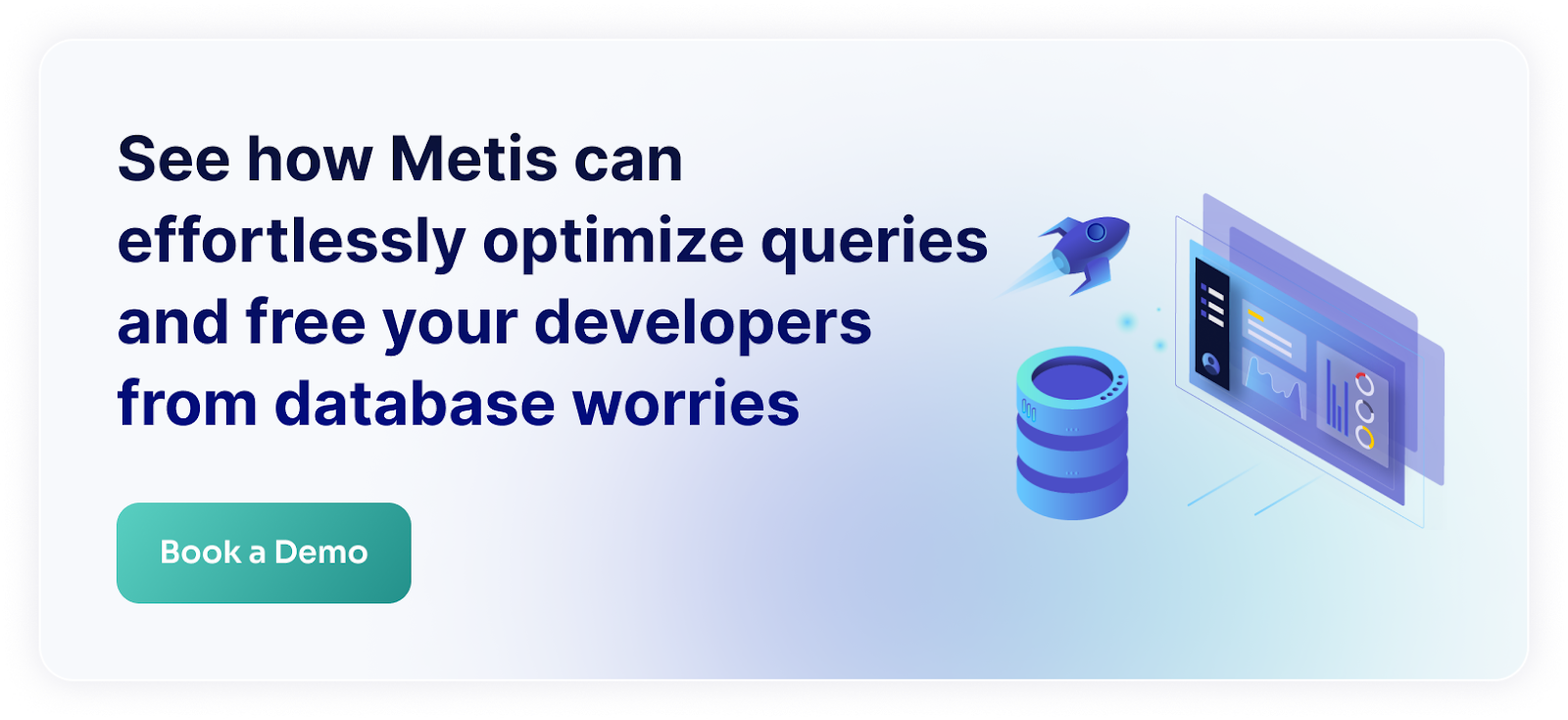The world is growing more complex by the day. We’re building, deploying, and managing increasingly vast amounts of data. Applications are broken down into microservices, and deployed multiple times daily, multiplying moving parts and pushing us toward full automation.
Yet automating database management isn’t easy. Our data stores are vital to our business, requiring careful handling. But as we scale to manage fleets of databases, traditional methods fall short. The tools, processes, and procedures needed to efficiently manage hundreds of clusters are often lacking. How can we improve? Read on to discover how Metis transforms database fleet management.
Existing Solutions Don’t Work
Current solutions like monitoring platforms focus on delivering as much data as possible, enabling us to sift through it and identify critical insights. This is beneficial, as we can seamlessly integrate data from operating systems, infrastructure, cloud services, servers, runtimes, networks, and more. With tools like OpenTelemetry, nearly every data source is accessible, allowing us to visualize and chart system performance over time.
But data alone isn’t enough - we need insights and understanding. Monitoring solutions flood us with data points, leaving us to decipher patterns and diagnose root causes ourselves. They highlight where issues are occurring but fall short of explaining how they originated, why they happened, or how to resolve them.
Problems can arise for many reasons: a new deployment may have issues, input data distributions might shift, or recent OS updates might introduce bugs. Monitoring doesn’t answer these questions; it only shows where the fire is burning. To truly understand and resolve issues, we need a more intelligent approach.
We Need Reasoning to Work Fast
We need tools that go beyond alerts like “CPU load spiked.” They should offer clear explanations of events in our environments, identifying whether an increased load stems from software, configuration, or hardware, and guiding us to the right solution.
Achieving this requires systems that can connect data across the Software Development Life Cycle, giving us a comprehensive view of code changes, CI/CD pipelines, deployments, configuration updates, schema migrations, and input data trends. With this integrated perspective, we could, for example, determine that a recent change in a query caused it to stop using an index, leading to a CPU spike. Armed with such insights, we know precisely how to address the issue by optimizing the index. Metis is such a tool.
Scale Your Business with Metis
Metis covers your whole SDLC. It helps your developers when writing the code and designing databases. It aids them during deployment to protect them from data loss and outages. Metis then covers the production by analyzing schemas, indexes, execution plans, configurations, and everything else that affects the database performance. Last but not least, Metis can fix issues automatically or page engineering teams when business decisions need to be made.
This gives us reliable processes that scale. We can deploy more and more databases without worrying that we won’t endure the cognitive load. Metis lets you own more and achieve more by working less.
Summary
Current tools fall short. Simply viewing data points and manually deducing insights isn’t enough - we need automated reasoning. To achieve this, we must build observability that encompasses data from every stage of the SDLC, delivering consistent, actionable explanations. Metis provides all of this, empowering you to work faster and manage the complexities of today’s environments more effectively







